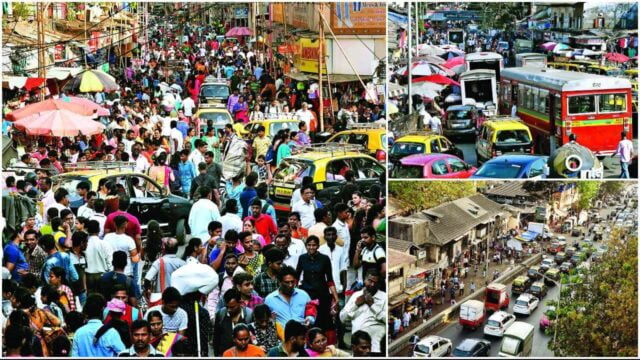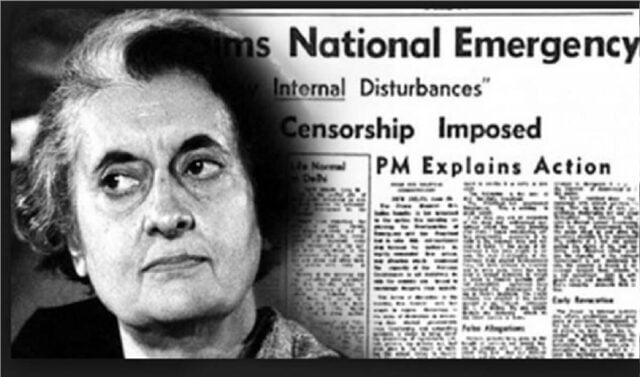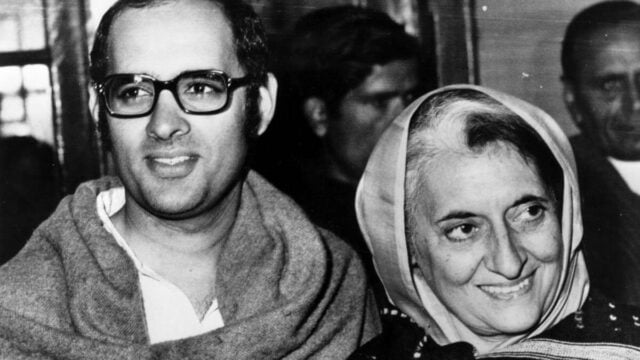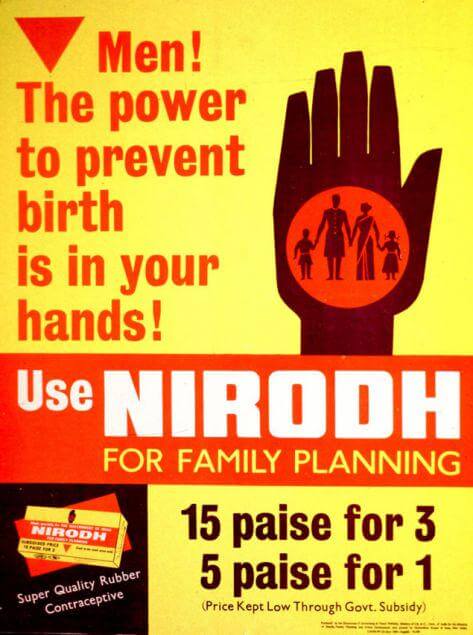India has been struggling with the problem of overpopulation since the mid-1900s.
As per the United Nation’s Population Division, we will surpass China in terms of population in 2024. This is a cause for worry because, as a developing country, an outburst of the population will only retard our growth.

Now, people are becoming more aware of this fact, and the dropping fertility rate is reflective of the same. It has now dropped to 2.2 as opposed to 5.9 in the 1960s. People themselves are choosing not to have more than two kids, which is an excellent sign.
However, this was not the case back in the 1960s. The concept of family planning was alien to most people, and to control the growth of population, Sanjay Gandhi devised an ambitious program.
Sanjay Gandhi’s Campaign To Sterilise Men
India was heading towards a major economic crisis. Due to poor rainfall, food production had declined, the price of imported oil was skyrocketing due to the international crisis, and inflation was at its peak.

Both Indira Gandhi and her son Sanjay Gandhi were convinced that the only effective way to ease the problems was controlling the country’s population, even if it meant using force and doing it against people’s will.
India had received loans amounting to tens of millions of dollars from the World Bank, the Swedish International Development Authority, and the UN Population Fund between 1972 to 1980 to implement sterilization programs.
It is important to note that Sanjay Gandhi, who played such a vital role in this mass sterilization program, did not hold any official government position. He was the Prime Minister’s son, and that was the only “authority” he had.

6.2 million men were sterilized in just one year, which was 15 times more the number of men sterilized by the Nazis during their reign, as per science journalist Mara Hvistendahl. Two thousand men lost their lives during the operation.
In two years, about 11 million men and women were sterilized and 1 million women had intra-uterine devices (IUDs) inserted.
Read More: India’s Population Control Measures Won’t Work Unless We Hit Youth With The Real Deal On Sex
Where Did The Problem Lie?
To receive international recognition, Sanjay Gandhi had this idea to control the population magically within a year and end poverty in a blink. If he could reduce the population even by a small percentage, then that would have been beneficial for his political agenda.
Ministry of Health estimated that with the right campaigning and planning, Indians could be educated and convinced to undergo sterilization. However, Gandhi did not want to wait that long.
The northern states of India, such as Uttar Pradesh, Bihar, Madhya Pradesh, Rajasthan, Haryana, Punjab, and Himachal Pradesh implemented this policy to get into the good books of Gandhi. The northern region was referred to as the vasectomy belt.
People belonging to lower classes had to bear most of the brunt. They were picked up by force and made to undergo sterilization. They had no one to turn to.
A certificate of sterilization became mandatory to receive salaries, renew driving/rickshaw/scooter/sales tax licenses, and receive free medical treatment in hospitals (a fundamental human right). To keep one’s child in school, it was essential to undergo sterilization.
Also, mostly it was Muslims who were affected by this program because birth-control is forbidden in their religion. But, no one paid heed to their religious values.
Was It The First Time That Indians Underwent Sterilization?
No. A detailed national family planning program was launched by the government in 1951. It is interesting to note that India was the first country to have developed such a program.

Sterilization turned out to be the best way for population control, but it had a societal stigma associated with it. Hence, awareness was required to make this a success.
But Gandhi’s way of handling things was unjust, brutal, and inhumane. This is a perfect example of what political leaders are capable of doing when they are unopposed and uncriticized.
As a result, in the elections of 1977, this forceful and gruesome mass sterilization program led to Indira Gandhi losing people’s votes, especially in the northern states.
Those years are now recalled as the Dark Age of Indian Democracy. Population control is vital but not at the cost of human values.
Force does more harm than good and this incident is solid proof of that.
Sources: BBC, Asian Studies, Livemint, Mel Magazine
Image Sources: Google Images
Find The Blogger: @TinaGarg18































